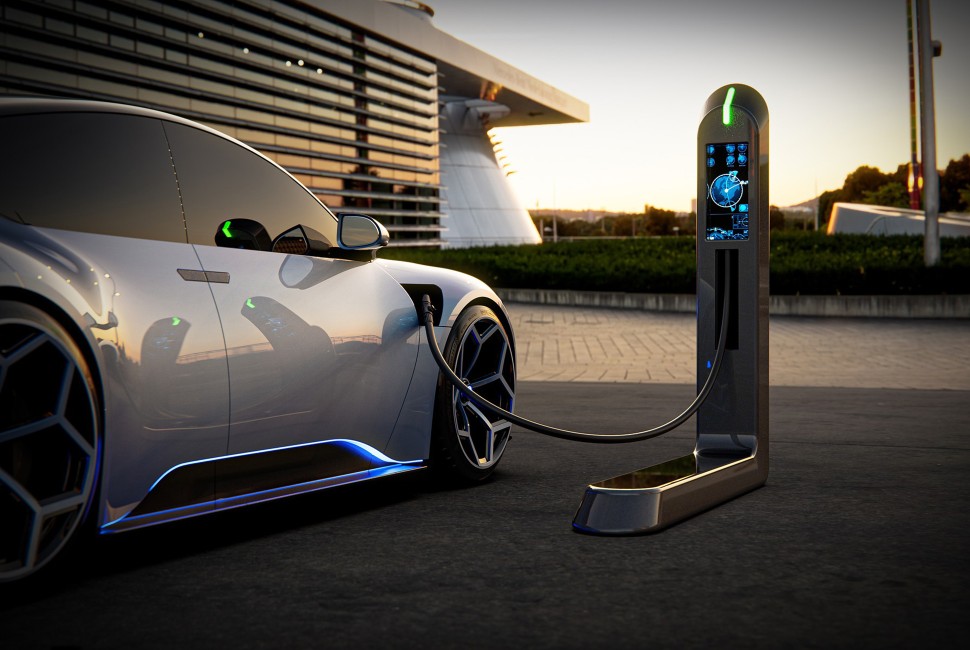
If the Chicago region replaced 30% of all on-road combustion-engine vehicles — including motorcycles, passenger cars and trucks, buses, refuse trucks and short- and long-haul trucks — with electric versions, it would annually save more than 1,000 lives and over $10 billion, according to a new Northwestern University study.
The new study, which simulates air quality at a neighborhood scale, also found that areas with predominantly Black, Hispanic and Latinx residents would benefit most.
The study underscores the potential of electric vehicles (EVs) to improve air quality and mitigate human-caused climate change, while also reducing unjust exposure and health burdens — despite EVs sourcing electricity from a grid that continues to include fossil fuel-fired power generation.
The paper was published today in the journal Environmental Research: Infrastructure and Sustainability.
“A common misconception regarding EVs is that areas near powerplants — which are often minority communities — disproportionately suffer the burden of poor air quality due to increased electricity demand and powerplant emissions output,” said Northwestern’s Maxime Visa, the study’s lead author. “Our study found that on-road emission decreases more than offset powerplant emission increases.
“The greatest air quality benefits from wholesale EV adoption are co-located with disinvested communities that, historically, have been susceptible to poor air quality due to systemic injustices and their proximity to highly frequented roads and interstates. Our results indicate that vehicle electrification is one potential solution for addressing long-standing air quality-related inequities in and around the city of Chicago.”
The study’s senior author is Daniel Horton, an assistant professor of Earth and planetary sciences at Northwestern’s Weinberg College of Arts and Sciences, where he directs the Climate Change Research Group. At the time of the research, Visa was an undergraduate researcher in Horton’s group; now he is a medical student at Northwestern University Feinberg School of Medicine.
Heavy-duty v. light-duty passenger vehicles
The new findings come on the heels of another study from Horton’s lab, which explored scenarios that replaced 30% of the predominantly diesel-powered heavy-duty vehicles (including short- and long-haul trucks, refuse trucks, and intercity, transit and school buses) in the Chicago area with electric versions. That study found that electrifying 30% of heavy-duty vehicles would save more than 500 lives and about $5 billion per year. In Visa’s study, however, the researchers electrified both light- and heavy-duty vehicles.
“This pair of studies is useful in helping determine which mode of vehicle provides the greatest air quality benefits when electrified,” Horton said. “We found that on a per-vehicle basis, heavy-duty vehicles emit disproportionate amounts of pollutants and greenhouse gases, but given the sheer number of light-duty vehicles on the roads, incentivizing an electric transition across all modes is needed.”
Both studies used a high-resolution air-quality model previously developed in Horton’s lab, which simulates and quantifies pollution levels by neighborhood — tracking pollutants across areas as small as one kilometer.
Impact by the numbers
Based on 2016 energy-generation infrastructure, Visa, Horton and their team found that electrifying 30% of the on-road vehicle fleet across the Chicago region would dramatically slash emissions and pollutants (carbon dioxide, nitrogen oxides, particulate matter, carbon monoxide and volatile organic compounds) with the exception of ground-level ozone.
In the modeled scenario, carbon dioxide emissions decreased by about 15.1 million tonnes (16.65 million U.S. tons) per year. Reducing the amount of nitrogen dioxide and particulate matter in the air would avoid 1,120 and 170 annual premature deaths, respectively. Premature deaths from ozone, however, would increase by about 80 per year.
The researchers also estimate that the greater Chicago region could save $10.7 billion and $1.63 billion in avoided annual health costs related to reductions in nitrogen dioxide and particulate matter, respectively. But the slight increase in ozone would cause an additional cost of $768 million per year.
The number of lives and dollars saved would increase drastically if the power grid shifted to incorporate more emissions-free electricity sources (like wind and solar).
“Almost a quarter of U.S. greenhouse gas emissions come from the on-road sector, making it a great target for climate change mitigation strategies,” Visa said. “However, downstream air-quality effects of vehicle electrification aren’t talked about as often, and our results confirm that they should be. I hope that by showing that EV adoption also leads to cleaner air and important health benefits, consumers and policymakers alike are incentivized to make the switch to cleaner modes of transportation.”
The study, “Neighborhood-scale air quality, public health and equity implications of multi-modal vehicle electrification,” was conducted in collaboration with researchers from the University of Notre Dame, George Washington University, and the Lake Michigan Air Directors Consortium and was supported by the National Science Foundation, the Environmental Defense Fund, the McCormick Center for Engineering Sustainability and Resilience and the Ubben Program for Carbon and Climate Science at the Paula M. Trienens Institute for Sustainability and Energy at Northwestern.

